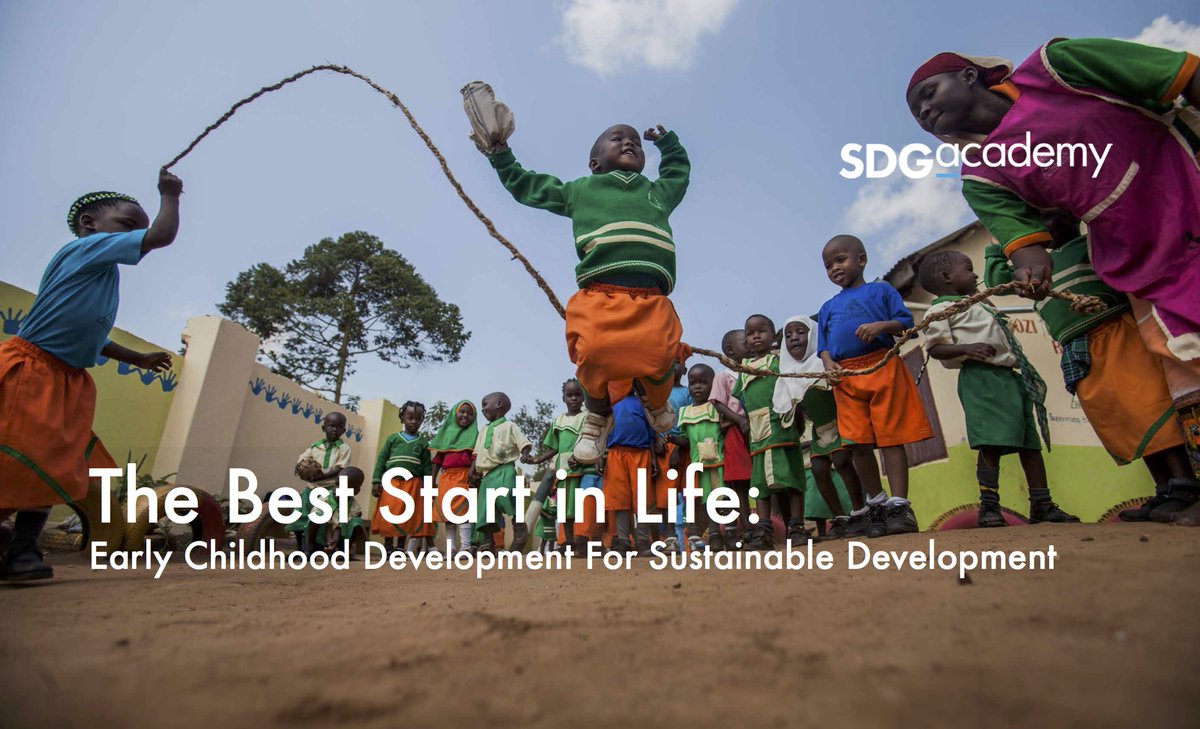
当前课程知识点:New Media and Cultural Studies > Final Exam > Final Exam > Discussion Questions of Lesson 10
返回《New Media and Cultural Studies》慕课在线视频课程列表
(Choose One to Answer)
1. Please analyze from the perspective of body criticism based on cases on the internet about grassroots expressing their appeals.
Grassroots are increasingly using their body as a weapon to help them express their appeals. For example, in 2010, Chen Maoguo, a sixty-year-old man in Chongqing, climbed to the top of a 15-meter-tall eucalyptus tree, built a shelter and lived there for 3 and a half months to protest against house demolition. In 2011, a migrant worker in Shenzhen ran naked on the streets with a black heart drawn on his chest and a mask writing “heartless boss” to demand his unpaid 200,000 RMB salary. In 2012, 13 kids upheld the slogan “pay my parents’ unpaid salary earned by hard toil, because I need to go to school” and kneeled at the gate of a property developer in Dali, Yunnan Province, in order to help their parents to get paid. In 2013, over 40 migrant workers in Wuhan did a group dance “Gangnam Style horse riding dance” at the gate of the employer to demand unpaid salary, declaring that they are forced to use this last resort. This attracted the attention of passers-by. Based on such cases, please think: (1) Do you think the grassroots’ way of expressing their appeals via performance is rational? (2) Based on the case, please talk about why body could be the weapon for grassroots to express their appeal?
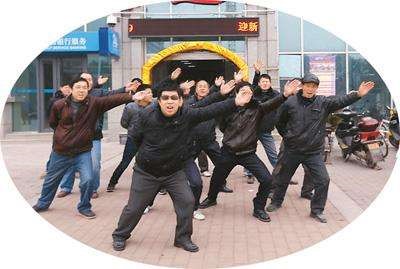
Migrant workers do “Gangnam Style horse riding dance” to demand for unpaid salary
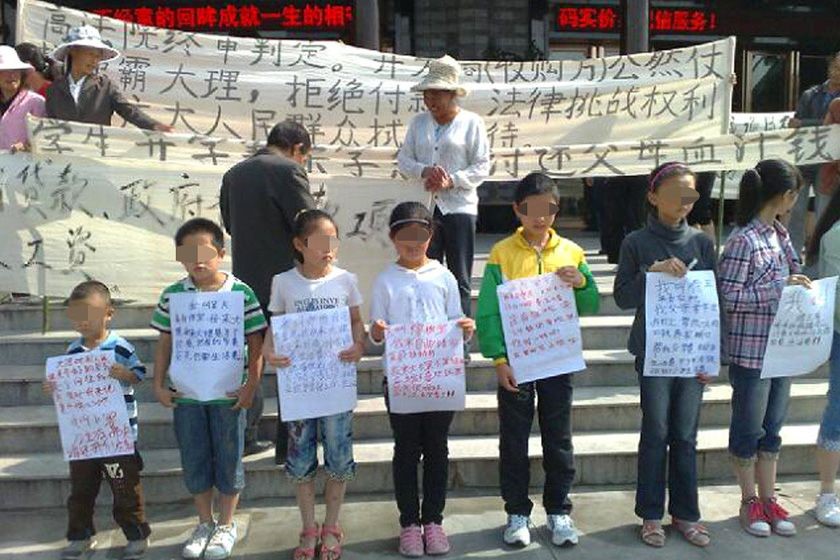
Kids in Yunnan help their parents get paid
2. Please analyze from the perspective of body criticism based on the cases of artists in online platforms and intellectuals expressing their appeals.
Nowadays, body is not only a weapon for grassroots to express their appeals, but also a tool for artists and intellectuals to struggle. In the incident of 80 artists in Chongqing protesting against the rising rent of studios, they tied iron locks and chains on their wrists to protest against the arbitrary rise of price and the blockade of art base by the lessor. In the incident of Beijing artists protesting against the vacating and demolition of the Art District, the artist Wu Yiqiang curled up naked in a pile of stones in below-zero weather, with a dim light beside him, using the metaphor of “inhabit” to describe the difficult living situation of the artist group in the forceful demolition. In the “demolition over my dead body” campaign, an artist named Black Sheep lie in front of the excavator, wearing red underpants and a red scarf on his head, covering his hands with red paint, with “over my dead body” written on his chest. In the Guangzhou cement cone incident, performance artist Ou Zhihang did push-ups naked on the poured cement cones. In the incident of Beijing artists protesting against the vacating and demolition of the Art District, artists started a “Brick Gang Movement”, holding bricks they found in the ruins after the demolition, displaying their bodies coming together as a collective community. Based on these incidents, please analyze: (1) Do you think artists and intellectuals are using a good approach to express their appeals? (2) How can body be used to help artists and intellectuals in their struggle?
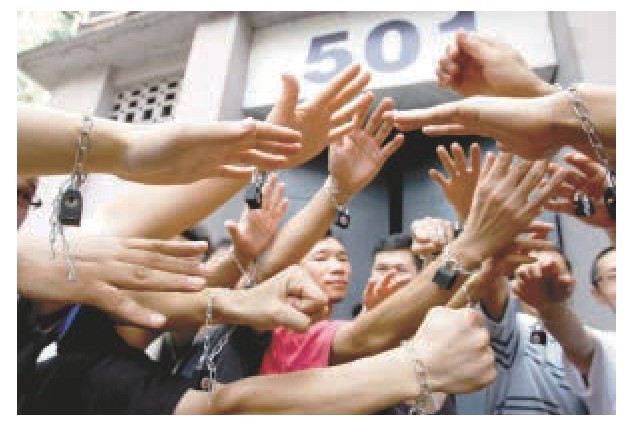
Iron lock 501
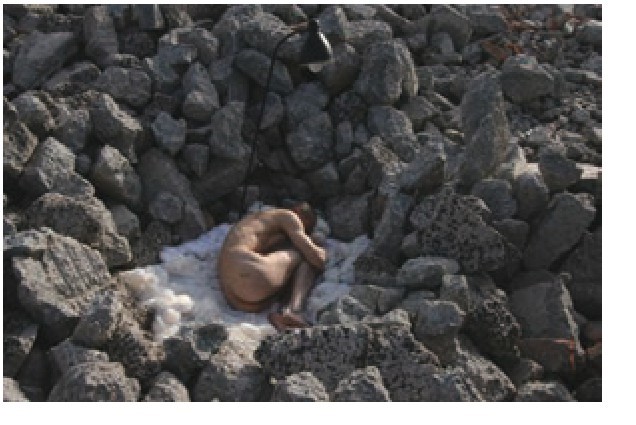
“inhabit”
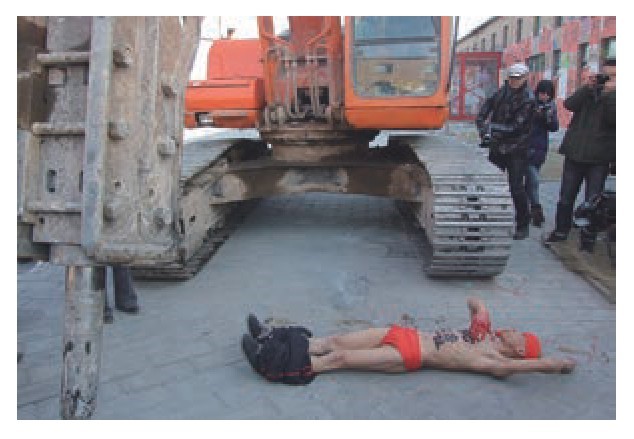
“demolition over my dead body”
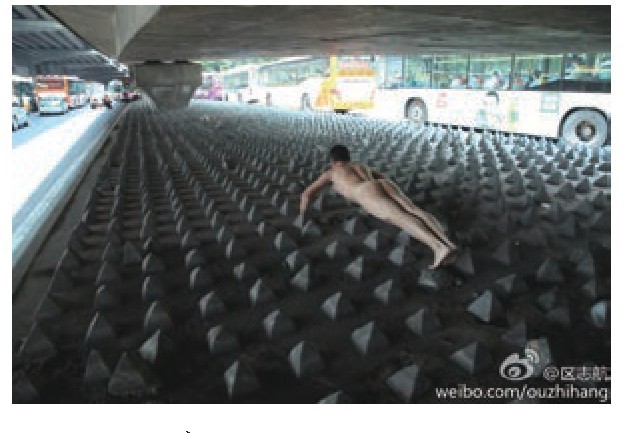
doing push-ups naked
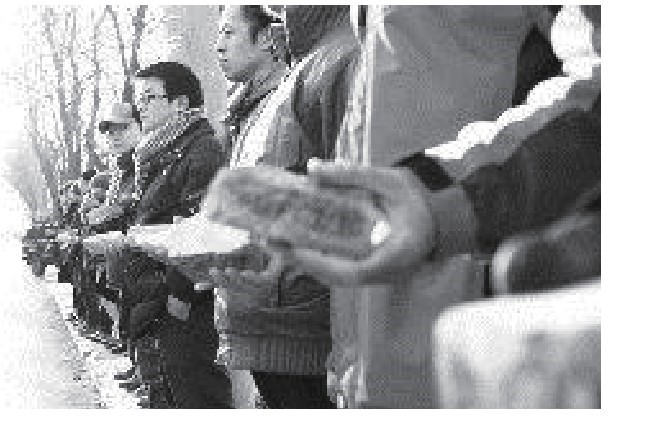
Brick Gang Movement
3. Please share your view on actions that people take today in pursuit of beauty (such as plastic surgery) from the perspective of body criticism based on cases about aesthetic standards.
In the new media era, when we go to a cosmetics store, we can see a variety of beauty products with various functions (whitening, freckle removal, anti-wrinkle, etc.). Today, many girls are already very beautiful, but some still want to have plastic surgery, hoping to become more beautiful. Many people go to the gym not only for fitness, but also with special attention to body-shaping. People are told by businesses in the beauty industry that only a body that meets a specific standard is beautiful and that they should work towards that standard. But in fact, the standard of beauty is not specific and unchanged. The Chinese saying “thin as Yan, plump as Huan” talks about different standards of beauty in different eras. The slim Yan and plump Huan are both beautiful in their own ways. The standard of beauty is formed under the impact of power structure. There are records in Intrigues of the Warring States and Mozi that “King of Chu likes ladies with thin waist, thus many ladies in his palace starve to death for a thin waist”, which shows the great leading role of power in fashion standards. In today’s new media context, we need to think about: (1) In order to pursue beauty, many people will do plastic surgery. Do you agree with this behavior? (2) What is behind the phenomenon of pursuing beauty in this era? In other words, today the pursuit of beauty is often accompanied by a variety of consumption. What is the driving force behind this?


Commercial adverts dedicated to “beauty”
返回《New Media and Cultural Studies》慕课在线视频列表
-1.1 Culturalism
--1.1
-1.2 Marxist Theory
--1.2
-1.3 Structuralism and Post-structuralism
--1.3
-1.4 Gender and Sexuality
--1.4
-Unit Test 1
-Discussion Questions of Lesson 1
-2.1 Aristotle’s Classical Rhetoric
--2.1
-2.2 Kenneth Burke’s New Rhetoric
--2.2
-2.3 Frame and Metaphor: Two Weapons in the Fight for Discourse
--2.3
-2.4 The Concepts of Our Time and the Secret to their Creation
--2.4
-Unit Test 2
-Discussion Questions of Lesson 2
-3.1 Understanding Signs: From Saussure to Pierce
--3.1
-3.2 The Power Relationship Behind Signs
--3.2
-3.3 The Landscape of Signs in the Cyber World
--3.3
-3.4 A Model of Communication Semiotic Criticism
--3.4
-Unit Test 3
-Discussion Questions of Lesson 3
-4.1 Feminist Stance in Romance Web Fiction
--4.1
-4.2 Paradox of Body Consumption
--4.2
-4.3 Women’s Empowerment in New Media
--4.3
-Unit Test 4
-Discussion Questions of Lesson 4
-5.1 Optimistic Theories of Cultural Consumption
--5.1
-5.2 Pessimistic Theories of Cultural Consumption
--5.2
-5.3 Fan Culture and Convergence Culture
--5.3
-Unit Test 5
-Discussion Questions of Lesson 5
-6.1 Understanding Rituals
--6.1
-6.2 Media Events and Media Rituals
--6.2
-6.3 Interaction Ritual Chains
--6.3
-6.4 New Media Ritual Criticism
--6.4
-Unit Test 6
-Discussion Questions of Lesson 6
-7.1 Overview of Subcultural Studies
--7.1
-7.2 Birmingham School’s Subcultural Studies
--7.2
-7.3 The Incorporation of Subcultures
--7.3
-7.4 Case Studies of Subcultures
--7.4
-Unit Test 7
-Discussion Questions of Lesson 7
-8.1 Space and Spatial Epistemology
--8.1
-8.2 Spatial Practice and Power Production
--8.2
-8.3 Lefebvre’s Theory of the Production of Space
--8.3
-8.4 Foucault’s Theory of Space Discipline
--8.4
-8.5 Cultural Consequences of the Production of Space
--8.5
-Unit Test 8
-Discussion Questions of Lesson 8
-9.1 Telegraph: Technology and Cultural Changes
--9.1
-9.2 Virtual Reality: Technology and Space-Time Restructuring
--9.2
-9.3 Mobile Phone: Technology and Subjectivity Alienation
--9.3
-9.4 WeChat: Technology Reshapes Social Relationships
--9.4
-Unit Test 9
-Discussion Questions of Lesson 9
-10.1 Five Shapes of Body
--10.1
-10.2 Philosophical “Adventure” of Body
--10.2
-10.3 The Code of Power Behind Body
--10.3
-10.4 Body Politics in the Era of New Media
--10.4
-Unit Test 10
-Discussion Questions of Lesson 10
-11.1 Internet Freedom: Media Imperialism in the Global Village
--11.1
-11.2 Cyber Diplomacy: The New Blue Ocean of Global Political Communication
--11.2
-11.3 Cyber Terrorism: The Challenge of New Media Decentralization
--11.3
-Unit Test 11
-Discussion Questions of Lesson 11
-12.1 Overview of Research Methods
--12.1
-12.2 Ethnography
--12.2
-12.3 Focus Group
--12.3
-12.4 Interactive Narrative
--12.4
-Unit Test 12
-Discussion Questions of Lesson 12
-Final Exam


